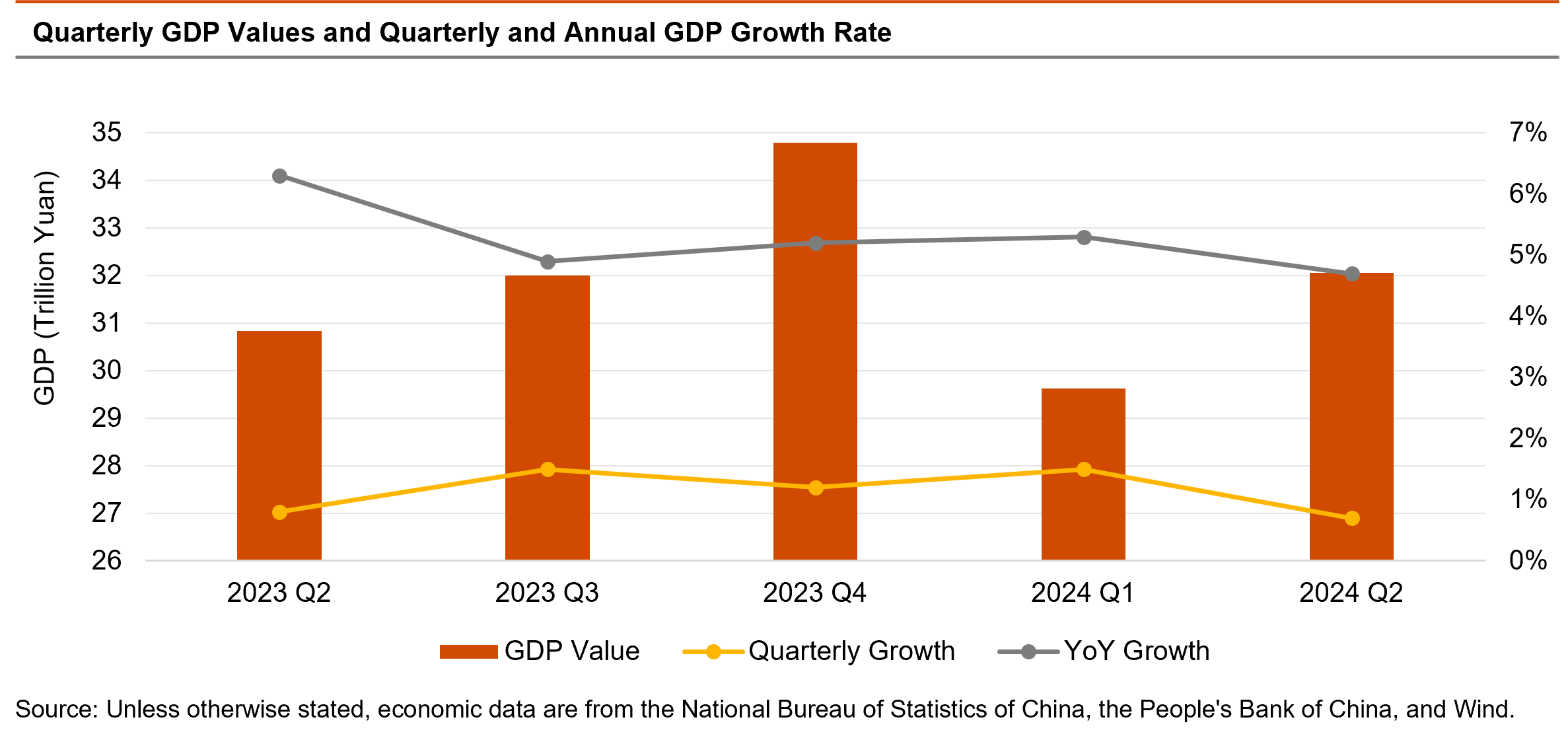China Economic Quarterly Q2 2024
China's uneven economic recovery: New growth drivers emerge
Our latest report provides an in-depth analysis of China’s economic momentum in the first half of the year, along with a forward-looking outlook for the second half. We explore how new quality productive forces are shaping China’s economic strategy to address structural challenges and unlock long-term growth opportunities.

Highlights

China’s economic momentum: Key takeaways from Q2 data and second-half outlook
In the second quarter, China’s GDP grew by 4.7% year-over-year, down from 5.3% in the first quarter, resulting in a 5% growth for the first half of the year. This aligns with the annual target.
- Uneven recovery: Robust factory activity and exports drove growth, but a property downturn and weak consumer spending weighed it down.
- High-tech sector growth: The high-tech sector continued to outpace the overall economy, highlighting China’s focus on high-quality development.
- Policy support: Policymakers have reaffirmed the 5% growth target, signalling increased government support and fiscal stimulus amid escalating trade tensions.
- Anticipated measures: Expected measures include expanded trade-in programmes and efforts to stabilise the property sector.
Topic in focus: New quality productive forces
New quality productive forces have emerged as a central theme. These forces drive policies for sustainable growth through technology, innovation, and green development while addressing structural challenges. This strategic approach emphasises five pillars:
- Technological innovation: Technological innovation serves as the cornerstone of China’s strategic pivot. The country ramps up research and development to achieve scientific breakthroughs.
- Emerging and future industries: Cutting-edge technologies foster emerging and future industries, such as artificial intelligence and quantum technology.
- Upgrading traditional industries: Upgrading traditional industries through digitalisation and green transformation remains a key driver of productivity gains.
- Institutional reforms: Institutional reforms enhance resource allocation. This aligns with the ‘two unswervingly’ principle for coordinated development of state-owned and private sectors.
- Opening-up: China’s opening-up leverages foreign direct investment to foster knowledge spillovers and outward direct investment to elevate its position in the global value chain.





